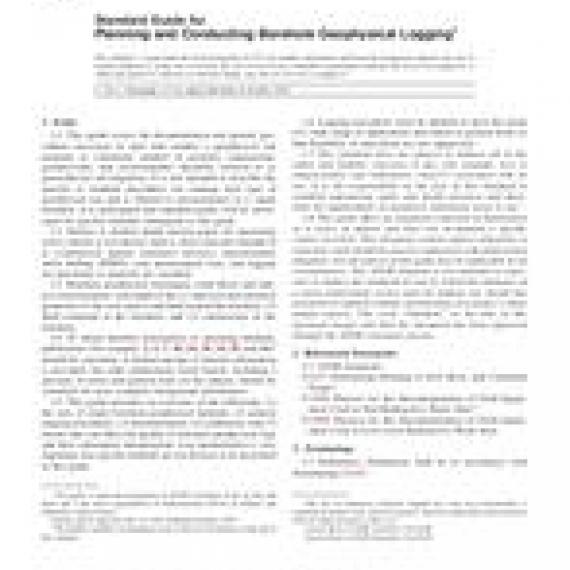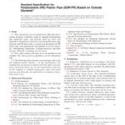No products
ASTM D5753-95e1
ASTM D5753-95e1 Standard Guide for Planning and Conducting Borehole Geophysical Logging (Withdrawn 2005)
standard by ASTM International, 05/01/1995
Full Description
1.1 This guide covers the documentation and general procedures necessary to plan and conduct a geophysical log program as commonly applied to geologic, engineering, ground-water, and environmental (hereafter referred to as geotechnical) investigations. It is not intended to describe the specific or standard procedures for running each type of geophysical log and is limited to measurements in a single borehole. It is anticipated that standard guides will be developed for specific methods subsequent to this guide.
1.2 Surface or shallow-depth nuclear gages for measuring water content or soil density (that is, those typically thought of as construction quality assurance devices), measurements while drilling (MWD), cone penetrometer tests, and logging for petroleum or minerals are excluded.
1.3 Borehole geophysical techniques yield direct and indirect measurements with depth of the ( ) physical and chemical properties of the rock matrix and fluid around the borehole, ( ) fluid contained in the borehole, and ( ) construction of the borehole.
1.4 To obtain detailed information on operating methods, publications (for example, 2, 5, 7, 18, 24, 29, 34, 35, and 36) should be consulted. A limited amount of tutorial information is provided, but other publications listed herein, including a glossary of terms and general texts on the subject, should be consulted for more complete background information.
1.5 This guide provides an overview of the following: ( ) the uses of single borehole geophysical methods, ( ) general logging procedures, ( ) documentation, ( ) calibration, and ( ) factors that can affect the quality of borehole geophysical logs and their subsequent interpretation. Log interpretation is very important, but specific methods are too diverse to be described in this guide.
1.6 Logging procedures must be adapted to meet the needs of a wide range of applications and stated in general terms so that flexibility or innovation are not suppressed.
1.7 This standard does not purport to address all of the safety and liability concerns, if any, (for example, lost or lodged probes and radioactive sources ) associated with its use. It is the responsibility of the user of this standard to establish appropriate safety and health practices and determine the applicability of regulatory limitations prior to use.


































